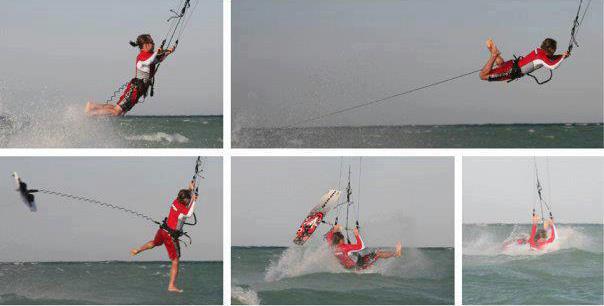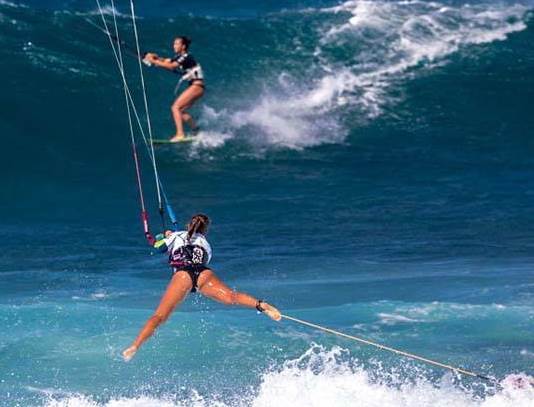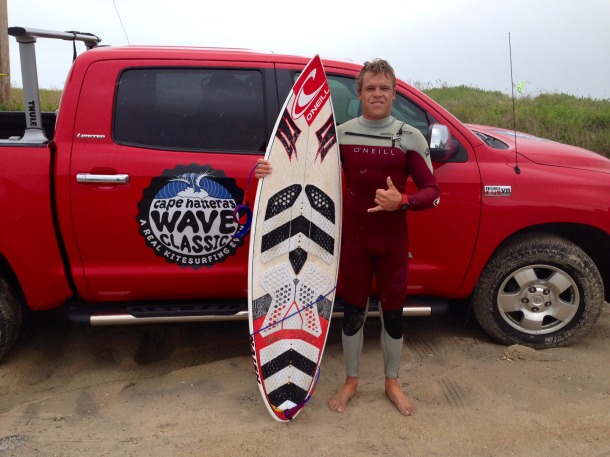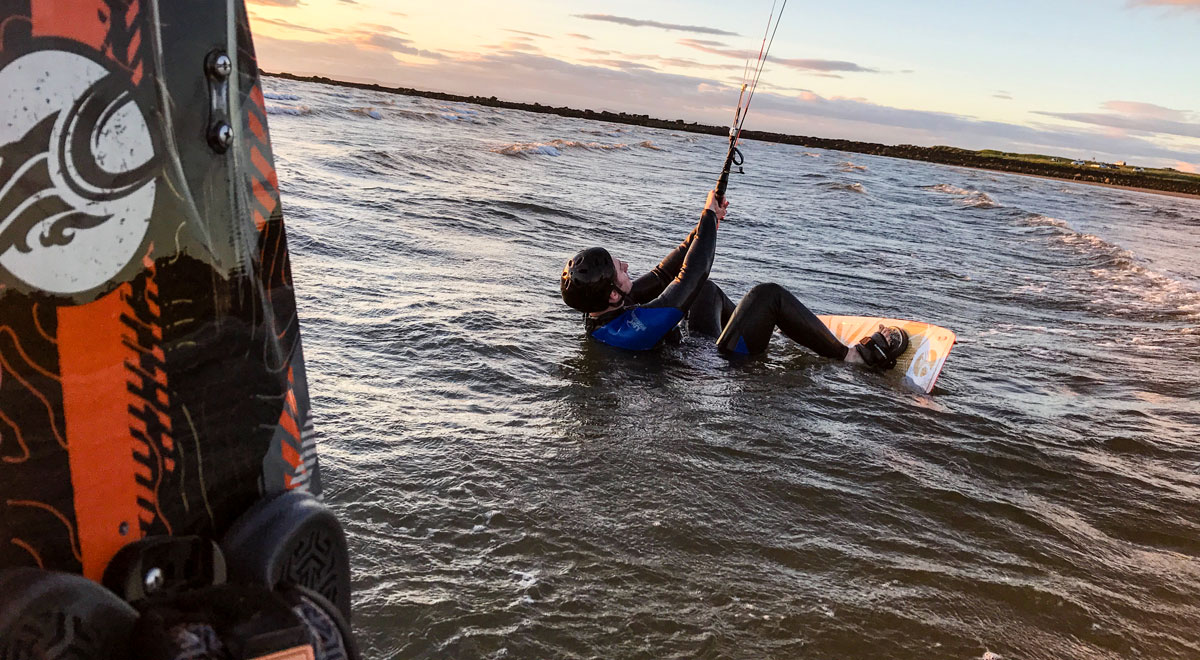Why Kiteboard Leashes Are Unsafe
Kitesurfing is generally a fairly safe sport where risk mostly depends on the kitesurfer himself. After our lessons you’ll know how to control the kite safely and you’ll know how to perform effective board recovery so you can continue progressing on your own. However, a very small number of kitesurfers feels like adding a potentially lethal piece of equipment to the game – a board leash. Wearing one is a dangerous and stupid idea.
Different to surfing, in kiteboarding the kite is our lifeline. The reason you have to use a leash whilst SUP’ing for example is that it’s very often your only safety measure whilst on the water. If your SUP runs away from you after you fall off – you’re screwed. We’ve got kites that help us to drag ourselves out of danger. Twintip kiteboards have no more buoyancy than just to keep themselves afloat. Also, surfers aren’t attached to very powerful kites that drag them at high speeds after wiping out – especially if you’re just starting out:
When wiping out in kiteboarding the leash will spring back making the board fly straight back at you. At best, you will end up with bruises. At worse – with knocked out teeth. Sadly, there have also been kitesurfers who didn’t survive the impact. No matter what type of a leash you’ll choose, you’re still increasing chances of ending up in a hospital or sending one of your colleagues to A&E. The internet is full of daft conversations over this dangerous piece of kit so let’s summarise some of them below.

It’s my choice to wear a leash
Absolutely. You can also choose to ride a horse upside down for all I care. If you’ll get hurt on a horse it’s a bugger – but this wouldn’t typically affect anyone else, apart from yourself and your family. You’ll definitely make the headlines and possibly receive a Darwin Award. In case of leashes however, you can cause serious accidents involving other kitesurfers. I really don’t want to be sent to a hospital, because someone doesn’t know how to bodydrag. We’re always happy to run clinics if anyone needs to polish these skills – just ask. Also, if you seriously hurt yourself or someone else at one of your local spots, chances are that your local council will get on the case. On top of everything you don’t want to be the cause of a local ban to all other kitesurfers.
I’ve never had an accident using one
I’ve never had a serious car accident. Doesn’t mean I stopped wearing a seatbelt or started playing Pokemon while driving. If things go wrong in kitesurfing, they usually go wrong really fast. Thankfully, there aren’t too many kiters nowadays using board leashes. Hence why we don’t have too many incidents. It would be even better if we could have none keeping in mind all the nasty accidents of the past, including the lethal ones. I don’t aim to post drastic images here so if you’re not eating right now here are some testimonials, with pictures, from some of the accidents.

But I use a reel leash, they’re 100% safe
Nothing’s 100% safe. Seriously, ask some parents. Reel leashes don’t usually spring back cutting off one’s jaw and that’s the user’s main argument to keep using them. The issue is that as everything else, these can fail too. What’s worse is that when you properly wipe out your board can be quite a distance away from you. Two things can happen:
- A kitesurfer rides between you and the board and his kite lines get tangled with your leash or he himself gets tangled. Not too cool when you travel at 25mph+.
- You loose your board when jumping and either it swings below you like an axe with a standard leash or it drops near someone else and tangles their kite lines. A perfect recipe for serious injuries.
Sometimes, when you wipe out your board might end up in front of you, flying through the lines. Happens quite often – especially to learners or those learning how to jump. Now add a leash binding your steering lines causing kite to death loop. No one wants to be anywhere near that.
But my leash has a fuse
This in theory should break if there’s large amount of force pulling the line. I’ve heard it over and over again – “it always broke off!”. You need one instance when it won’t.
Oh everyone else should just get a helmet
Just like you should get a bullet-proof vest because someone wishes to carry a weapon with them. Helmet-wearing should definitely be encouraged. Not because of the water impact but to protect wearer’s head on land and in an event of his own board hitting him in the head. Especially in big surf. Wearing a helmet should be done by default by all kitesurfers, period. However – that’s everyone’s personal choice. As much as we encourage that, it will take years before riders will wear them as standard. On their own accord. Not just because one person decides to wear a leash on the spot.

It’s an extreme sport and accidents can happen
For sure – that’s why we love it. For some it’s about boosting big, kiteloops and impressive handle passes. For others it’s about ripping the waves and some just want to cruise around. It’s the adaptability of the sport that makes it so attractive and can be personalised for pretty much anyone under the sun. Being an extreme sport on its own why on earth would anyone want to add another risk factor to the mix is beyond me. Again – it’s not only the leash-wearer safety that’s at stake here. It’s the rest of us too.
But I don’t want to loose my board
First of all – learn how to properly body drag. Few pointers from our instructors can make a world of difference. It’s not that hard with the right tuition. Wiping out is part of the game. No matter how good you are and it’s good to know how to recover your kit. Also, other kitesurfers should know how to recover others’ boards – again, we do run clinics on these techniques. So if you’re in Scotland and you want to learn how to do recoveries – of your own or others’ kit – let us know and we’re happy to help.
When you think about it – loosing a board to the sea isn’t ideal. But it all boils down to weather you value your board over your own and others’ safety? Yes – it may happen but it’s not the end of the world. Leaving the beach with a massive scar or sending someone else to a hospital is a whole different story.
Most of you, especially beginners, ride only in either on shore or cross on shore conditions – your board will always float back, unless you’ve got a massive current situation going on. In that case – choose your spot wisely. Most spots suitable for beginners and improvers don’t – so come on – that makes using a leash even more irrational.

The exceptions
There are some very experienced wave surfers who use leashes with their strapless boards. Mostly at dangerous spots where, for example a combination wind direction with a dry reef can make it next to impossible to recover the board. Some of them use leashes in shark-infested waters.
For some of us riding waves on strapless boards, having a leash means that our board won’t take someone out in the lineup – especially if we’re kitesurfing with surfers on the same spot. In these cases, however, they and we know the risk but also we know how to behave after a wipeout, properly depowering the kite.
None of the above applies to 99% of local UK spots and especially TwinTip riders. Unless you get freaked out by dolphins and seals… then maybe MTB is more suitable… but then there are the bloodthirsty squirrels! And in any case, unexperienced rider should avoid dodgy spots. Kite on safe beaches, with lots of space, sand, few and weak currents and on-shore winds. Build up your experience and skills, work on efficient board recoveries.
Stay safe, use your common sense, go out with other capable kitesurfers and practice body drags.
As one of my friends said: “It’s OK to hurt yourself while kiting. It’s not OK to hurt anyone else.”
Mahalo!


4 Comments
Im so sick of this (…).
Ocean reels are a superb bit of kit.
You should learn to body drag up wind granted but while learning this saved me weeks of body dragging.
I think any responsible school should be posting about why? People don’t wear helmets.
Blowing a gale last two days at my spot
Loads of people out
I was the only one wearing a helmet.
Not wearing a helmet and risking injury is 1000 times worse than wearing a leash and risking injury.
We have had death and injury this year because they were not wearing helmets.
One very serious accident and the helmet the guy WAS wearing was near sliced in half.
A board caught in the wind on the beach flew through the air and hit the guy on the head.
He was still quite bad in hospital despite the helmet.
Please lay off leashes and get serious about helmets.
I appreciate it works for you. It’s great that you wear a helmet – everyone should and you should definitely encourage that at your local spot. As a responsible school, if you’ll actually read the post, I have highlighted that all kiters should wear them. All our students do after they are done with kitesurfing lessons with us.
However, a helmet won’t protect your face, your teeth, your fingers (we’ve seen some cut off) and other parts of your body if your leash fails. It won’t protect others and yourself from tangles and potentially drowning.
Eliminating one risk and adding another to balance it out doesn’t make any sense. As mentioned, it’s your personal choice as long as you won’t cause an injury to someone else. I appreciate you never had any issues with your leash. There are others who got the rough end of the stick though. It only needs to happen once brother. Every single kitesurfing organisation in the world, every kitesurfing manufacturer and vast majority of kitesurfers are on the same page with kiteboard leashes. Which is: don’t.
So yes – wearing a helmet is definitely the thing to do. As mentioned in the post, it’s not about the impact when crashing into the water but about potential accidents on dry land or getting hit by your own board after wipeouts.
Top man!!! I think exactly same. They never spring back!! (…) and what about all surfers? They all use them?
If you read the post this has been also mentioned. Two different sports – surfers aren’t attached to powered up kite propelling you through the water, they don’t fly kites attached to their harnesses with 20-odd long lines. When you wipe out in surfing it’s a completely different story to kitesurfing. Apples and Oranges.